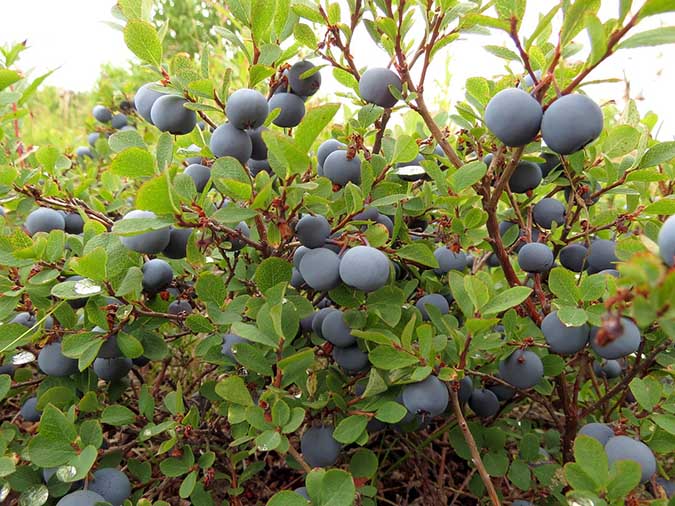An edible hedge provides privacy, food, and fun in a small space. Here are 23 varieties to consider, plus planting tips for success.

Short on Space? Plant an Edible Hedge!
I’ve been planting fruit trees for years. I’ve helped install orchards and planted rows of blueberries, grapes, and blackberries. I’ve also launched multiple food forests with great success.
Recently, however, I’ve become quite interested in how much food a gardener could pack into a simple hedge along the edge of his property.
Instead of just a barrier, a hedge becomes a linear food forest.
You May Also Enjoy:
“The Only 3 Gardening Tools You Actually Need”
I’m not just thinking about planting one thing, you see. This idea isn’t about replacing a boxwood hedge with a hedge of blueberries or Nanking cherries.
No—think deeper! Think multiple species!
How exciting would it be to have a hedge containing hazelnuts, apples, grapes, peaches, gooseberries, blackberries, and currants? Or, for those of you in more tropical climes, mangoes, pineapples, passion fruit, cacao, coffee, vanilla, black pepper, guavas, and nutmeg?
Check out this guy’s edible hedge system:
Look at how much he packed into his space!
Here’s the beginning of my own edible hedge in the tropics:
Noni, Surinam cherry, edible hibiscus, chaya, mulberries, and more. What fun! It’s already been growing fast since I filmed that video.
You can do it, too, in almost any climate.
How To Plant an Edible Hedge
Start with the larger specimens first, and space them out. These would generally be trees that you’ll keep smaller via judicious pruning.
If you’re afraid of your trees shooting to the moon and don’t know how to prune, I highly recommend Ann Ralph’s book Grow a Little Fruit Tree.
It isn’t hard to keep fruit trees under control, and they can often be turned into quite decent hedges. Of course, if you’re afraid of the bigger fruiting species, you can always plant your hedge starting with edible shrubs.
You May Also Enjoy:
“Composting the SCARY Stuff—Meat, Dairy, Bones, and Human Waste!”
“Small-Space Vermiculture, Step-by-Step”
“Sheet Mulching: Build Soil, Thwart Weeds, and Make Your Garden Fertile”
After you plant in the larger species and determine your spacing (I wouldn’t go less than 8′ on bigger trees, but you can go down to 4′ on shrubs), then you can interplant in the gaps with berries and vines.
Eventually, you’ll end up with a wild-looking edible strip of food-forest hedge. I highly recommend putting down mulch at the beginning to control the weeds when your hedge is young so it can get off to a good start. The first couple of years after planting will require the most care. Water when it’s very dry out and feed with compost if you have it. Adding the mulch will help feed the system, as well as keeping in water.
An edible hedge can allow you to pack in a lot of food into a long linear space. Almost every yard has a place for a hedge—why not use it to grow food?
What Do You Think?
Do you have experience growing edible hedges? If so, what are your favorite varieties to grow and your best tips for success? Let us know in the comments below!
________________
The Grow Network is a participant in the Amazon Services LLC Associates Program, an affiliate program designed to provide a means for our team to earn fees for recommending our favorite products! We may earn a small commission, at no additional cost to you, should you purchase an item after clicking one of our links. Thanks for supporting TGN!
David The Good is a Grow Network Change Maker, a gardening expert, and the author of five books you can find on Amazon: Compost Everything: The Good Guide to Extreme Composting, Grow or Die: The Good Guide to Survival Gardening, Totally Crazy Easy Florida Gardening, Create Your Own Florida Food Forest, and Push the Zone: The Good Guide to Growing Tropical Plants Beyond the Tropics. Find fresh gardening inspiration at his website TheSurvivalGardener.com and be sure to follow his popular YouTube channel.

I created a Citrus Hedge in California, so it was a Mediterranean climate. I planted 8 different citrus that successively ripened. I planted them in order from first ripening from one end to the next. This hedge turned out really well. I can’t post an image so you will have to imagine the look. But, I included Mandarin Orange, Blood Orange, Navel Orange, Tangela, and many more.